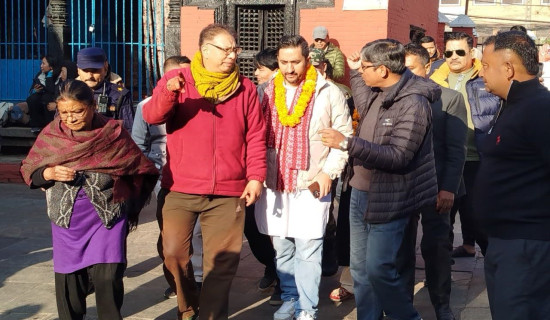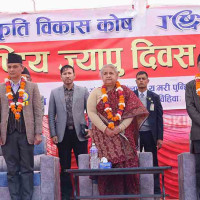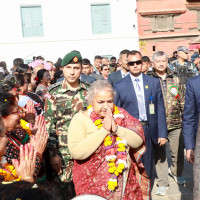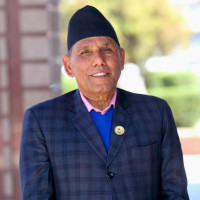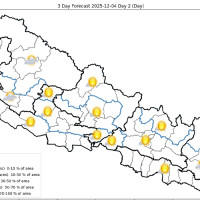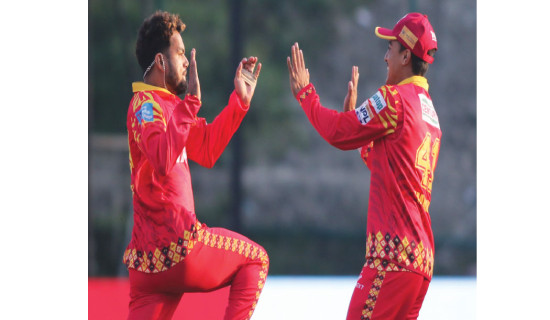- Thursday, 4 December 2025
Pro-monarchy Agenda Loses Relevance
The pro-monarchy movement, which had long been simmering in the background, has now escalated into violent demonstrations, as seen in last week’s fiasco. The notion that a king could “save the nation” stems from public resentment over the state’s lacklustre performance. However, multiple factors have propelled pro-monarchy politics to this level. Whether the movement fades away or transforms into a “revolution” depends on several factors. For now, there are more questions than answers.
To understand the unfolding situation, it is crucial to examine what went wrong at the pro-monarchy rally at Tinkune, Kathmandu, last week. Both pro- and anti-republican forces blame each other for the chaos, which resulted in two deaths and property damage worth millions of rupees, but missteps occurred on both sides. When organisers realised that the crowd was significantly smaller than they had expected, they resorted to a contingency plan — that was to provoke the security personnel by breaching the security line (They were, in fact, encouraged by the public attendance to ‘welcome’ the former king who arrived at Kathmandu from Pokhara earlier in the week).
Media attention
This move was intended to mask the embarrassment of low public turnout while drawing media attention to their cause. The fact that the organisers later justified the violence and demanded government compensation for damages suggests that escalation was a premeditated fallback plan. On the other hand, the police’s decision to fire tear gas canisters from nearby buildings and even onto the stage, where key leaders were seated, further aggravated the situation.
What does this incident mean for the pro-monarchy movement? The organising committee has stated that it will announce its next course of action after assessing the situation. They believe that there is enough support for the former king to shift the political balance in his favour and attribute their failure to mobilise these masses effectively. Their likely next step is a nationwide mass mobilisation effort. This movement has also been emboldened by the rise of Hindutva (political Hinduism) in India, particularly following the electoral victories of the Bharatiya Janata Party and the ascendance of Yogi Adityanath, a monk-turned-politician, in Uttar Pradesh, which shares a long border with Nepal. Monarchists frequently claim that restoring the monarchy would be the right remedy for Nepal’s current challenges. However, they have yet to clarify how it would address the country’s problems.
The idea of monarchy itself is not monolithic. Even if we exclude the idea of absolute monarchy from consideration, there are at least two forms of constitutional monarchy: one where the monarch retains political power, such as the authority to declare state of emergency or mobilise the armed forces (as granted by the 1990 Constitution of Nepal), and another where the monarch serves purely as a symbolic figurehead, as seen in Britain and Japan where monarchs only perform ceremonial duties set by the Cabinet of Ministers. Based on their rhetoric, Nepal’s monarchists appear to favour the former, as a head of state with zero political power would have little influence on governance, including lawmaking and its execution.
However, for two key reasons, monarchy has lost its relevance in today’s Nepal. First, politically conscious and globally connected citizens reject the idea of being ruled by a hereditary institution that stands above the law. Second, even if republican forces were to accept a cultural king, maintaining a monarchy would impose a significantly higher financial burden on taxpayers than a presidential system. While this movement is unlikely to succeed for several reasons, it has undoubtedly brought existing tensions to the forefront. An elected Constituent Assembly (CA) formally abolished the 240-year-old kingship in 2008. This was preceded by the April Uprising against the autocratic rule of former king Gyanendra
The monarchists remain resolute in pushing their agenda, working to garner support both domestically and internationally. However, it is difficult to determine whether they possess the necessary resources — both financial and popular — to launch a genuine “revolution,” as some of their leaders claim. If the turnout at the recent rally is any indication, their actual public support is weaker than they suggest. Many went there out of curiosity and to see what was unfolding. Yet, if the movement gains critical mass, it could spiral into a prolonged and bloody conflict, potentially more destructive than the Maoist war, as regime changes are rarely peaceful and almost always involve bloodshed, as evidenced by such movements around the world.
Growing dissatisfaction
Monarchists may have been receiving sympathy and support from various sources, including certain segments of the Nepali diaspora worldwide and Hindu nationalist elements in India. However, a true revolution cannot succeed without widespread, active public participation. Not all sympathisers take to the streets, and not all attendees participate. The primary force fuelling this once-dormant movement is the public’s growing dissatisfaction with Nepal’s major political parties and their governance, particularly in the face of economic decline and high youth unemployment.
The public is further enraged by the fact that the ruling political elites and their subordinates remain unscathed by the current economic fallout. Now the ball is in the court of these political parties. The architects of Nepal’s current constitutional framework must decide whether to address governance failures and restore public confidence or brace for yet another cycle of protests.
(A PhD in political science from the State University of New York, Buffalo, the author is a faculty member at IACER. govinda@iacer.edu.np)



